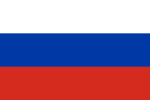



| Art by Maria Kononov |

|

|

|

|

|
Life Stimulus
In 2011, Maria had invented a project that helps
children in hospitals, called Life Stimulus. In
it, a group of children under Maria's guidance
draw a series of pictures, usually based on local
fairytales and folklore. During these drawing
sessions, Maria would ask everyone to try to project
their positive emotions and optimism into the work as
much as possible. She would recount the details of
fairytales, explain how it could be captured with
vivid colours, and help stimulate the imagination
of the group. Once finished, the resulting pictures
are then assembled into one large painting, which is
subsequently donated to a hospital to be hung in their
children’s ward. This way, while the medical staff
focus completely on the physical path to recovery,
Maria tries to improve the spiritual and psychological
elements, where optimism and joy are a key to speeding
sick children's recovery.
Click on a picture below to see what children have created under Maria's guidance.
Russian Fairytales
120cm x 100cm, acrylic on canvas
The Scientific Center of Children's Health in Moscow, Russia
Russian Fairytales
120cm x 120cm, acrylic on canvas
The St. Elizabeth Hospital in Gütersloh, Germany
Australian Fairytales
120cm x 90cm, acrylic on canvas
The Murdoch Children's Research Institutein in Melbourne, Australia
Fairytale in Space
120cm x 90cm, acrylic on canvas
The St. Anne Hospital in Vienna, Austria,
Pushkin's Fairytales
120cm x 100cm, acrylic on canvas
The Federal Scientific Clinical Center of Children's Hematology, Oncology, and Immunology in Moscow, Russia
Italian Fairytales
120cm x 120cm, acrylic on canvas
The Bambino Gesù Children's Hospital in Rome, Italy
Fairytales by Charles Perrault
120cm x 100cm, acrylic on canvas
The Armand Trousseau Hospital in Paris, France
Thyl Ulenspiegel by Charles de Coster
120cm x 120cm, acrylic on canvas
UZ Leuven Hospital in Leuven, Belgium
English Fairytales
120cm x 100cm, acrylic on canvas
Great Ormond Street Hospital for Children, United Kingdom |
|
|
|